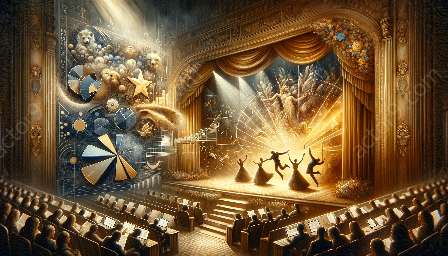Broadway acting is a dynamic and challenging form of theatrical performance, demanding a high level of skill and versatility from its practitioners. Central to the success of a Broadway actor is their ability to fully embody and portray the characters they are tasked with bringing to life. Character development in Broadway acting is a complex and nuanced process, involving a range of techniques and considerations specific to the world of musical theater.
Understanding the intricacies of character development in the context of Broadway acting is crucial for actors aiming to deliver compelling and authentic performances on stage. This guide will explore the art of character development in Broadway acting, delving into the techniques, approaches, and insights that can elevate an actor's ability to inhabit diverse and engaging roles within the realm of musical theater.
Broadway Acting Techniques
In order to effectively explore character development in the context of Broadway acting, it is essential to first understand the fundamental techniques that underpin the craft of a Broadway actor. Broadway acting is characterized by its larger-than-life nature, combining elements of drama, music, and dance to create impactful and memorable performances. As such, actors must be adept at harnessing a wide range of skills and techniques to excel in this competitive and demanding field.
1. Vocal Mastery: A cornerstone of Broadway acting is the ability to deliver powerful and emotive vocals that can fill a theater and resonate with audiences. Actors must undergo extensive vocal training to develop the strength, range, and control necessary to bring musical numbers to life while effectively conveying the emotional depth of their characters through song.
2. Physical Expression: The physicality of Broadway acting is equally vital, demanding performers to convey emotion and narrative through expressive movement and dance. Mastery of choreography, stage combat, and physical characterization is essential for creating captivating and immersive theatrical experiences.
3. Emotional Authenticity: Broadway actors must possess a profound capacity for emotional range and authenticity, allowing them to access and convey a diverse spectrum of emotions in a genuine and compelling manner. This emotional depth is crucial for establishing engaging and believable characters that audiences can connect with on a profound level.
4. Character Immersion: Immersing oneself in the psychology and motivations of a character is a fundamental aspect of Broadway acting. Actors undertake in-depth character analysis and research to fully comprehend the inner workings of their roles, enabling them to authentically inhabit the personas they portray while staying true to the unique demands of a Broadway production.
Character Development Techniques
With a solid understanding of the foundational techniques of Broadway acting, actors can then delve into the specific strategies and approaches for developing rich and multidimensional characters within the context of musical theater. The following character development techniques are tailored to the unique demands of Broadway acting, empowering actors to breathe life into their roles with depth and resonance.
1. Script Analysis and Contextual Understanding: Character development begins with a deep examination of the script and the historical, cultural, and thematic context of the production. Actors must meticulously dissect their characters' dialogue, motivations, and relationships, seeking insights that inform their portrayal and contribute to the overall narrative arc of the musical.
2. Physical Characterization and Movement: Broadway actors harness their physicality to embody characters in a visually impactful manner. From posture and gait to gestural language and physical tics, each physical choice contributes to the creation of a fully realized persona. Through coordinated movement and stage presence, actors can communicate nuances of personality and identity, enriching the audience's perception of the character.
3. Vocal Characterization and Musical Interpretation: Delving into the musical score and lyrics provides actors with a wealth of insight into their characters' emotional states, desires, and narrative progression. Through vocal characterization, actors infuse their singing with genuine emotion and intention, effectively using their voices as instruments of storytelling to convey the inner world of their characters.
4. Psychological Emulation and Empathy: To develop empathetic and authentic portrayals, actors must empathize with their characters' experiences and inner lives, stepping into their shoes to comprehend their struggles, triumphs, and aspirations. By engaging in psychological emulation, actors can tap into universal human experiences and connect with their characters on a deeply emotional level, fostering performances imbued with sincerity and resonance.
Broadway & Musical Theater Insights
The world of Broadway and musical theater provides invaluable insights and inspirations for fostering character development within the context of performance art. Drawing from the rich traditions and innovations of musical theater, actors can integrate the following insights into their character development endeavors, enriching their portrayals with depth, authenticity, and creative flair.
1. Theatrical History and Tradition: Broadway actors benefit from immersing themselves in the rich tapestry of theatrical history, drawing inspiration from iconic performances, genres, and eras to inform their character development. By understanding the evolution of musical theater and the diverse schools of performance, actors can craft nuanced and historically informed portrayals that pay homage to the heritage of the art form.
2. Collaboration and Ensemble Dynamics: Musical theater thrives on the power of collaboration and the synergy of ensemble performances. Actors engage in collective character development by cultivating ensemble rapport, understanding the interconnectedness of characters, and embodying their roles within the broader narrative tapestry. This collaborative ethos enriches character interactions and fosters cohesive and immersive storytelling.
3. The Intersection of Music and Emotion: Music serves as a potent conduit for evoking and expressing emotion within the realms of Broadway and musical theater. By recognizing the symbiotic relationship between music and character emotion, actors can conduct character development with heightened sensitivity to musical nuances, rhythm, and thematic resonance, infusing their portrayals with musicality and emotional depth.
4. The Power of Theatricality and Staging: Character development in the context of Broadway acting is intricately linked to the art of theatricality and stagecraft. Actors leverage the dynamic possibilities of staging, lighting, and visual storytelling to shape their characters within the theatrical landscape, utilizing the spatial and visual elements of the stage to enhance the audience's engagement with their portrayals.
By integrating these insights from the realm of Broadway and musical theater, actors can enrich their character development endeavors and craft performances that resonate with depth, authenticity, and creative vitality. Embracing the unique demands and artistic traditions of the genre, actors can cultivate compelling and enduring characterizations that captivate audiences and contribute to the rich tapestry of musical theater.



































